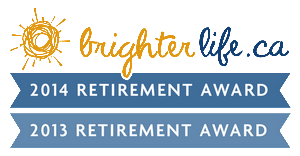As concerns about healthy eating have grown, so too has the interest in vegetarianism and veganism. Many nutrition experts recommend “eating low on the food chain”. In plain language this means eating more grains, vegetables and fruits, and fewer meats, cheeses and other animal-based products. I am not a vegetarian or a vegan, but I have friends who are so this post is for them, and for those considering this food choice.
There are of course various levels of vegetarianism, and each type has its own unique health benefits and some health challenges as well. Of course, vegetarians, like meat eaters, must still make healthy food choices. Simply pigging out on French fries while avoiding the burger will not make you a healthy vegetarian.
Some people who consider themselves vegetarians still eat poultry and seafood, while others avoid all animal flesh, even fish and chicken. Most vegetarians still eat milk, dairy products and eggs. In nutritional circles these people are referred to as lacto-ovo vegetarians.
Vegans, on the other hand, avoid all animal products, including eggs, milk and dairy products, and even fabrics like silk, leather and wool. It is vegans who face the largest challenges and risks when trying to follow a healthy diet. Most vegetarian diets provide more than enough nutrition, as long as smart dietary choices are made.
The key to eating a healthy vegetarian diet is much the same as eating a healthy diet that includes meat. It all boils down to making smart food choices, understanding nutritional labels, and cooking your vegetables to maximize their nutritional value.
Choosing the foods that make up the bulk of a vegetarian diet is very important. For most vegetarians, vegetables, grains, lentils and soy products will make up the bulk of their diet, and these staples are included in many vegetarian recipes.
When cooking with soy, however, it is important to remember that tofu is relatively high in fat. The fat content of tofu dishes is often comparable to that of dishes that are made with lean cuts of meat. Those vegetarians following a low-fat diet may want to limit the amount of tofu based products they eat.
The same caution applies to the nuts and seeds that can make up a large part of a vegetarian diet. Nuts and seeds are excellent sources of dietary protein, but they can be high in fat as well.
Many newly minted vegetarians worry that they will not be able to get enough protein and iron without eating meat, but for most vegetarians this is not a problem. Most diets today actually contain too much protein, and there are many non animal derived sources of protein for vegetarians to enjoy.
Proper cooking techniques are of course very important to any healthy diet. Avoiding high fat cooking methods is important, as is avoiding the use of high fat creams, butters and sauces. A vegetable stir fry cooked in healthy olive oil can be a great addition to any vegetarian menu. And a great fruit salad is both easy to make and delicious as a snack or a meal.
The only real area of concern when it comes to vegetarianism and health is the B-complex vitamins, particularly vitamin B12. Vitamin B12 is almost exclusively derived from animal-based sources, so vegans, who avoid all animal products, should take a high quality vitamin B12 or B-complex vitamin supplement. It is also important for vegans to discuss their diet and lifestyle with their family physicians. As vegetarianism and veganism becomes more widespread, the amount of information on the nutritional needs of these two groups continues to grow.
The bottom line is that vegetarians can enjoy a very healthy lifestyle. Making vegetables, fruits, whole grains and beans the centerpiece of the diet is a smart move for many people, and a good low fat vegetarian diet can be a great way to enjoy a healthy lifestyle. As with a meat-based diet, however, it is important for vegetarians to follow common sense eating guidelines and make smart choices when creating meat free meals.


